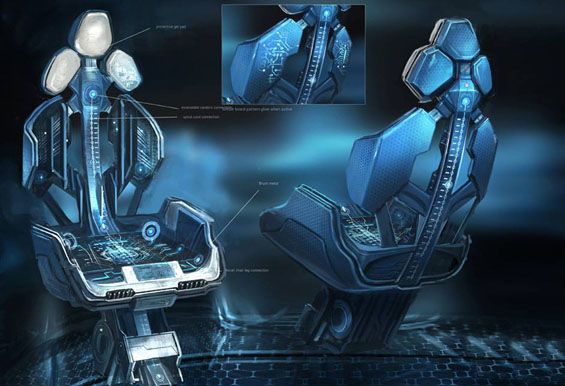Aspiring Jedi

Image Source: Link
Intent: A Modified Medical Hoverchair, to allow for assisted movement.
Development Thread: If necessary
Manufacturer: Arkanian Microtechnologies (Arkanian Micro)
Model: M-4XC Hoverchair
Affiliation: Open Market
Modularity: Yes (detailed below)
Production: Mass Produced
Material: Durasteel Frame, Gel Cushioning, various electronic circuitry tied into chair repulsorlifts
Description:
Designed as an alternative to bio-medical prosthetics, the Hoverchair is primarily manufactured by use for those suffering from degenerative illnesses that affect motor control, as well as those suffering from paralysis or needing mobility support due to bone breakages etc. The chair's modular design allows for each one to be tailored to the fit of the user, and can include different cushioning and support mechanisms, depending on the patient's needs, including:
- Cushioned armrests with incorporated steering mechanisms
- Steering mechanism options: steering column (controlled by pushing or pulling the stick); manual directional buttons; steering wheel with push-buttons for forward/reverse mechanisms
- Rear-grip handles to allow for manual pushing by another
- Headrest and neck support
- Full-body cushioning of various types
- Restraints: full-body coverage; simple leg-restraints; lap belt; full-leg covers
- Inertial Dampening systems tied into chair mechanisms to soften trauma upon the patient in event of any impacts.
- Adjustable Repulsorlift systems, with variable power requirements
The Repulsorlift mobility system uses several small repulsors built in to various locations on the bottom and back of the chair to provide forward and limited upward mobility: using this, patients should be able to lift their chair over small objects and navigate stairs, but only to a certain height, since the power limitations on the chair prevent anything more dramatic. The chair features energy cells sufficient to power itself for two days without recharging - however, the chair's universal charger requires eight hours to charge the chair back up to full power, enabling most patients to have the chair recharging overnight.
Navigation is performed via use of one of several different control options: a steering column that can be moved in a 360 degree rotation, with acceleration and repulsorlift controls sitting next to it; a manual push-button system that uses directional keys to move the chair (with turning being performed through use of the right- and left-directional keys, these causing the chair to rotate) or, finally, a steering wheel system for those who prefer to 'drive' their chair in the same way you might drive a speeder.







